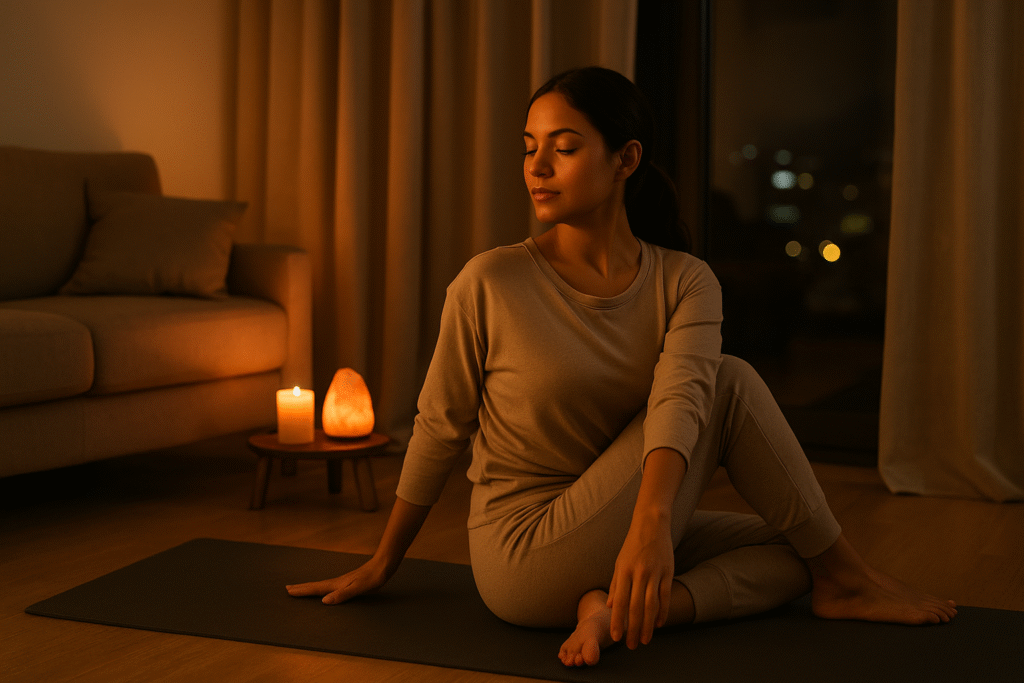Is there really a best time of day to exercise? Whether you’re an early bird hitting the gym before sunrise or a night owl burning calories after dinner, this debate is more relevant than ever. While some swear by the energizing effects of morning workouts, others argue that late-day sessions enhance performance and reduce injury risk.
In this article, we’ll explore the science behind exercise timing and how it impacts fat loss, strength, metabolism, and sleep. You’ll get practical tips tailored to your goals—whether you want to lose weight, boost energy, or build muscle. By the end, you’ll know exactly when your best time to work out is.
Let’s dive into the evidence and find the right fit for your body clock and lifestyle.
How Exercise Timing Affects Your Body

Circadian Rhythms and Physical Performance
Your body operates on a 24-hour internal clock known as the circadian rhythm. This natural cycle influences hormone release, body temperature, metabolism, and alertness—factors that directly affect exercise performance. Studies show that strength, flexibility, and coordination often peak in the late afternoon to early evening, suggesting that your body may be more physically prepared for demanding workouts during this window.
Morning Workouts and Fat Burning
Exercising in a fasted state—typically in the morning before breakfast—can encourage your body to tap into fat stores for energy. This makes morning exercise particularly appealing for those aiming to lose weight or enhance metabolic health. Additionally, a morning routine can boost mood and productivity for the day ahead by triggering endorphins and cortisol at optimal levels.
Visual Insight — Circadian Influence on Workout Performance
| Time of Day | Hormonal Profile | Best for |
|---|---|---|
| Morning | High cortisol, low melatonin | Fat burning, mood boost |
| Afternoon/Evening | Elevated testosterone, peak body temp | Strength, endurance |
Common Myths About Workout Timing

Myth #1 – Morning Workouts Are Always Better
It’s a common belief that morning workouts are superior for everyone. While they offer benefits like improved discipline and fat burning, they may not be ideal for strength training or endurance. If you’re not a morning person, forcing early workouts could lead to poor performance or even burnout. The key is finding a time that matches your natural energy peak and schedule.
Myth #2 – Evening Workouts Disrupt Sleep
Another misconception is that exercising at night interferes with sleep. While intense late-night workouts might elevate heart rate and adrenaline, most people experience no negative impact on sleep quality if they finish at least one hour before bedtime. In fact, some studies suggest evening exercise may improve deep sleep stages and recovery, especially in strength athletes.
Real Case Insight — Study on Sleep and Evening Training
In fact, a 2020 meta-analysis published in Sports Medicine found that evening workouts did not impair sleep in healthy adults. When performed more than 60 minutes before bed, evening exercise was associated with increased REM sleep and reduced sleep onset latency. These findings align with NIH-supported research on exercise timing and sleep quality, confirming that strategic evening workouts can actually improve sleep for many people.
Step-by-Step Guide to Finding Your Ideal Time
Evaluate Your Chronotype
Your natural energy cycles—whether you’re a morning lark or a night owl—play a major role in determining your optimal workout time. Morning types may thrive with early routines, while night owls often perform better after sunset. Identifying your chronotype can help align workouts with peak alertness and motivation.
Experiment with Consistency and Tracking
Try exercising at different times over a two-week period. Track your energy levels, performance metrics (like reps, pace, or weights), and post-workout recovery. Note how you sleep, how you feel mentally, and whether you’re more consistent at a certain time. This real-world data will help you choose a schedule that fits both your body and lifestyle.
Use Tools to Stay on Track
Fitness trackers, journaling apps, or simple workout logs can help you monitor patterns. Tools like WHOOP or Fitbit can provide insight into your recovery and readiness, suggesting optimal training windows based on heart rate variability and sleep data.
Routine Checklist
- Choose a consistent time that matches your natural rhythm
- Hydrate and eat appropriately based on workout timing
- Warm-up thoroughly, especially during early sessions
- Plan workouts that match your time-based strengths (e.g., cardio in the morning, strength in the evening)
Bonus Tips and Expert Advice
Advanced Tips to Maximize Workout Timing
For fat loss, try combining light morning cardio with an evening strength session a few times a week. This “double workout” strategy, when managed properly, can increase total energy expenditure and metabolic rate. Another tip: sync workouts with meals—exercise shortly after eating for better muscle glycogen use and reduced cortisol spikes.
What Experts Say About Exercise Timing
Many fitness professionals agree that the “best” time to work out is the time you can commit to consistently. According to Healthline’s comprehensive review, both morning and evening sessions offer unique benefits, and consistency matters more than clock time. Still, they note that afternoon sessions often show improved performance and lower injury risk for most individuals.
How to Apply This to Your Routine

Create a Daily or Weekly Routine
Structure your workout plan around your energy highs. For example:
- Morning routine: Light cardio, yoga, or bodyweight circuits to energize your day
- Evening routine: Weight training, HIIT, or endurance sessions to leverage peak strength and performance
Keep weekends flexible to allow for longer sessions or active recovery, like hiking or swimming.
Functional Recipes and Ingredient Pairings
Support your workout timing with strategic nutrition:
- Pre-morning workout: Black coffee or green tea with BCAAs (if fasted)
- Post-workout breakfast: Protein smoothie with banana, oats, and almond butter
- Pre-evening workout: Rice cakes with almond butter or a banana with whey protein
- Post-evening meal: Grilled salmon with quinoa and steamed vegetables
Habit Checklist
- Chose a consistent workout time
- Matched meal timing with workout
- Tracked energy and performance
- Adjusted schedule weekly if needed
7-Day Challenge: Discover Your Best Time
- Day 1–2: Try fasted morning cardio
- Day 3–4: Resistance training in the late afternoon
- Day 5–6: Mix and match based on comfort
- Day 7: Rest, review, and pick your preferred window
Conclusion
Finding the best time of day to exercise isn’t about following trends—it’s about tuning into your body’s natural rhythms and goals. Whether you’re aiming to burn fat, gain muscle, or simply stay consistent, the timing of your workouts can make a subtle yet meaningful difference. Morning sessions may enhance fat metabolism and discipline, while evening workouts support peak performance and strength gains.
Ultimately, the best time to exercise is the time that works for you. Align your workouts with your energy, schedule, and goals—and you’ll build a fitness routine that sticks.
Main Takeaways
- Morning workouts support fat burning, mood, and consistency
- Evening workouts enhance strength, endurance, and flexibility
- Circadian rhythm plays a role in performance and recovery
- Consistency is more important than the time of day
- Personal experimentation helps determine your ideal schedule
Further Reading
- 🔥 Want to burn fat faster? Discover the 10 Best Exercises for Rapid Weight Loss that you can do anytime, anywhere.
- 🧘♀️ Morning flexibility or evening strength? Compare Yoga vs. Pilates to choose the perfect complement to your fitness routine.
- 💊 Need a boost for your evening workouts? Read our expert Mitolyn Review and see how this mitochondrial support supplement can elevate your performance.








One Response